EPoX EP-9U1697-GLi: ULi M1697 Goes Mainstream
by Gary Key on March 15, 2006 12:05 AM EST- Posted in
- Motherboards
Audio Performance
The Realtek ALC-655 AC97 audio codec was tested with the recently released 3.84 driver set. The Realtek DirectSound audio drivers do not support more than 26 hardware buffers and the OpenAL 1.1 drivers do not support more than 23 hardware buffers at this time, so the scores cannot be directly compared to the HDA Mystique 7.1, Realtek ALC-882, and Creative Labs Sound Blaster X-FI audio solutions in the benchmarks. The Realtek OpenAL 1.1 driver increases CPU utilization up to 8% more than the Realtek DirectSound drivers.
If you are a serious gamer, then a dedicated sound card is still a requirement to ensure consistent frame rate averages across a wide variety of games. We noticed in previous testing of our Battlefield 2 and Half Life 2 benchmarks that the Realtek AC97 audio codecs would cause stuttering in intensive scenes. The 3.84 driver release does not have stuttering in our current benchmarks while improving performance across the board.
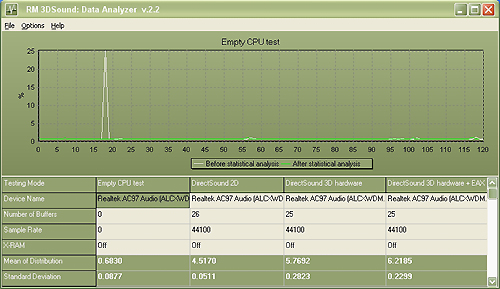
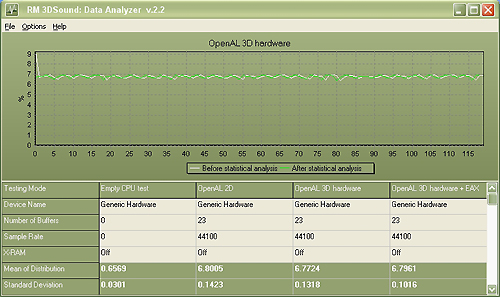
The Realtek ALC-655 AC97 audio codec was tested with the recently released 3.84 driver set. The Realtek DirectSound audio drivers do not support more than 26 hardware buffers and the OpenAL 1.1 drivers do not support more than 23 hardware buffers at this time, so the scores cannot be directly compared to the HDA Mystique 7.1, Realtek ALC-882, and Creative Labs Sound Blaster X-FI audio solutions in the benchmarks. The Realtek OpenAL 1.1 driver increases CPU utilization up to 8% more than the Realtek DirectSound drivers.
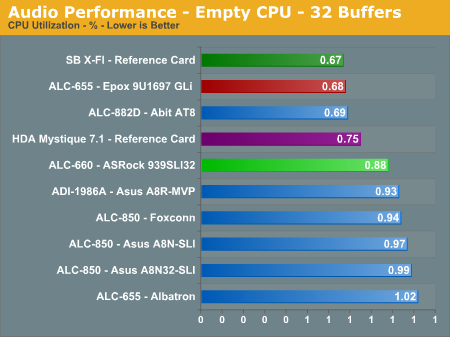
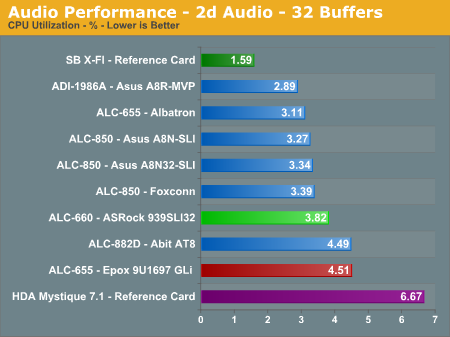
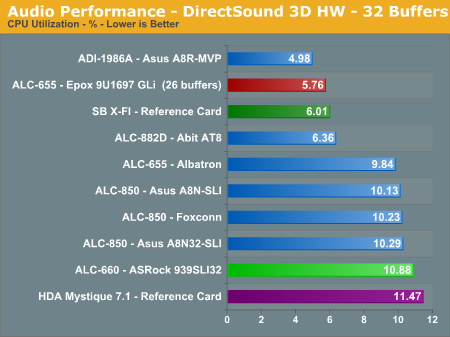
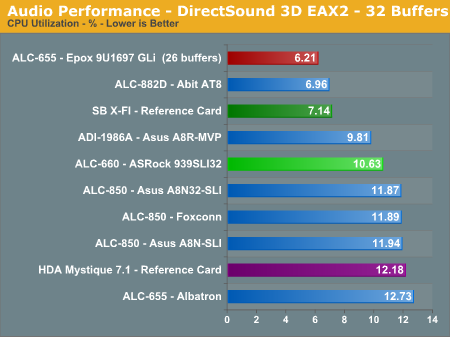
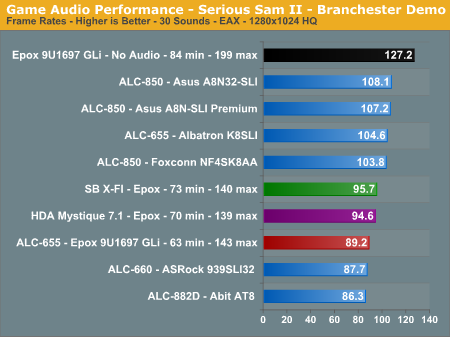
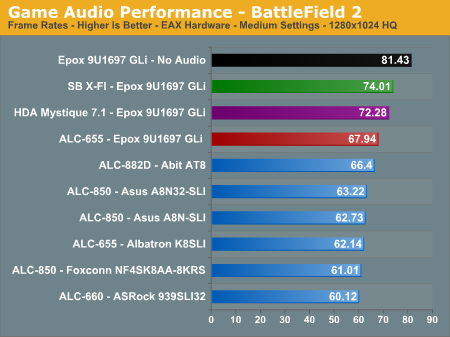
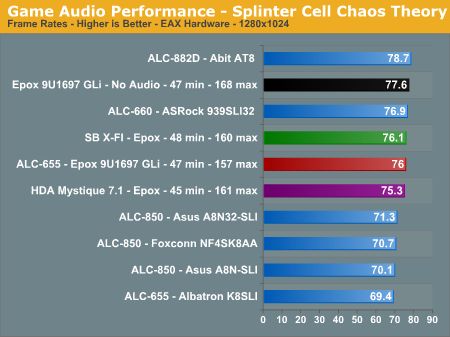
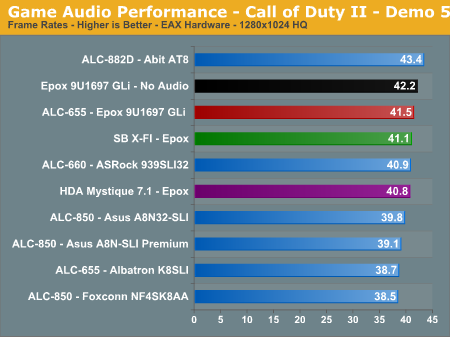
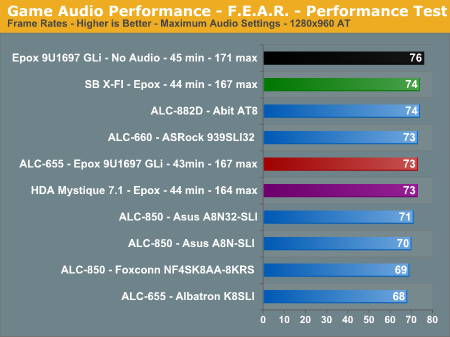
If you are a serious gamer, then a dedicated sound card is still a requirement to ensure consistent frame rate averages across a wide variety of games. We noticed in previous testing of our Battlefield 2 and Half Life 2 benchmarks that the Realtek AC97 audio codecs would cause stuttering in intensive scenes. The 3.84 driver release does not have stuttering in our current benchmarks while improving performance across the board.
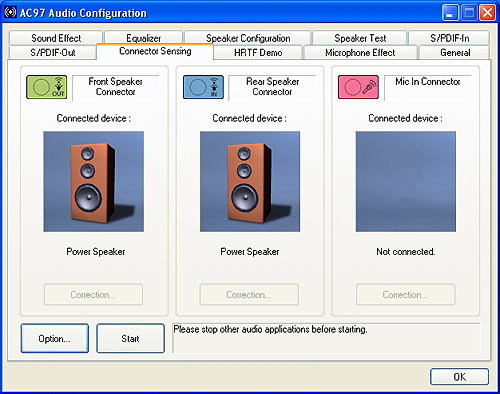
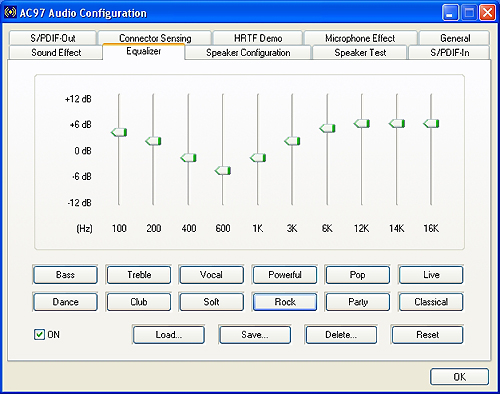










35 Comments
View All Comments
Spoelie - Wednesday, March 15, 2006 - link
Another very small quirk: page 7 3rd graph shows latency - lower is better - but the boards are still ordered like higher is better..Spoelie - Wednesday, March 15, 2006 - link
hmm and apparantly all the audio utilization graphs as well :) And since we're still at it, since for storage performance differs only from southbridge to southbridge and not from board to board, it might ease up those graphs to just display one representative for each + the board in review.Rock Hydra - Wednesday, March 15, 2006 - link
Er sorry, forgot to mention you said DDR2.Googer - Wednesday, March 15, 2006 - link
Here is another just released review on this same motherboard:http://www.ocworkbench.com/ocwbcgi/newspro/viewnew...">http://www.ocworkbench.com/ocwbcgi/newspro/viewnew...,
Gary Key - Wednesday, March 15, 2006 - link
Sorry about that, corrected. :)